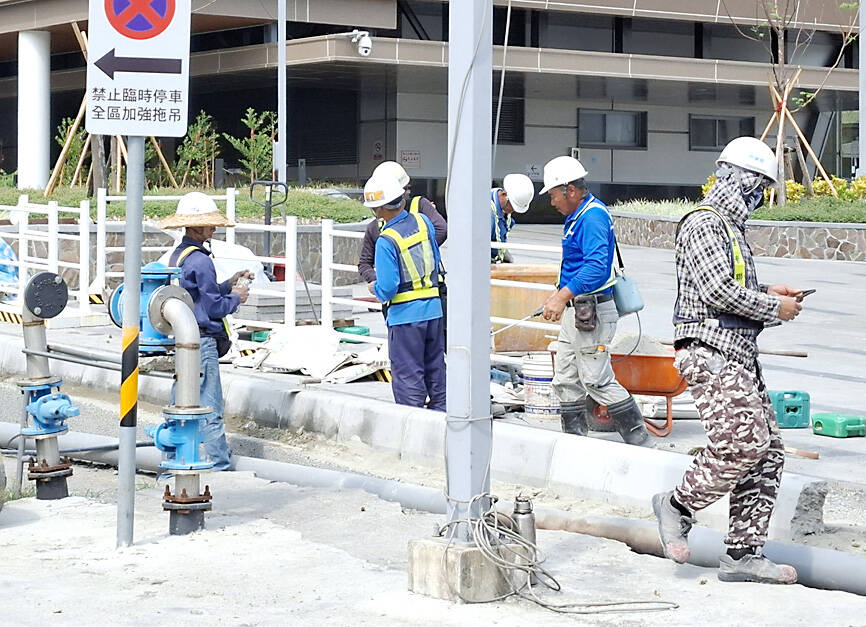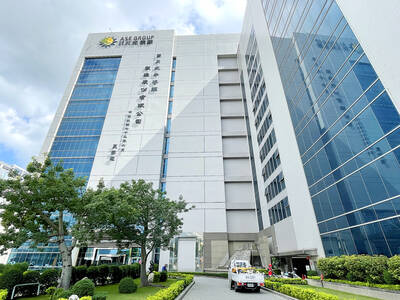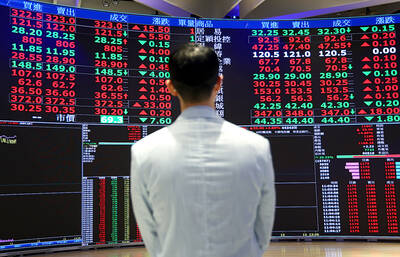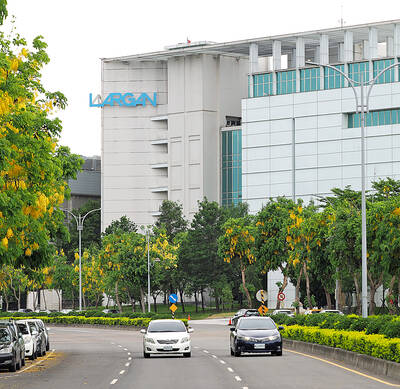The average monthly regular wage in October gained 2.63 percent from a year earlier to NT$46,455, while the average total monthly wage — including overtime pay, performance-based commissions and bonuses — increased 3.41 percent to NT$53,227, the Directorate-General of Budget, Accounting and Statistics (DGBAS) said yesterday.
The data represented a mild slowdown from September — when companies issued bonuses in observance of the Mid-Autumn Festival — but supported a continued improvement that beat inflation, Census Department Deputy Director Tan Wen-ling (譚文玲) said at a news conference in Taipei.
In the first 10 months of this year, the average real monthly wage and the average total monthly wage picked up 0.5 percent and 1.82 percent each to NT$46,371 and NT$61,529 respectively, after factoring in consumer price hikes for the same period, Tan said.

Photo: Hou Cheng-hsu, Taipei Times
Improving business underpinned the wage hikes as evidenced by the amount of overtime hours, which hit 24.3 hours per month at local makers of electronic components, the strongest in 51 years, she said.
“Chip demand from artificial intelligence [AI], high-performance computing and cloud services is gaining momentum without any signs of mitigation” she said.
Taiwan is home to the world’s major suppliers of advanced chips used in AI, she said.
Wage increases were most evident at financial institutes at 6 percent, followed by shipping and warehousing service providers at 3.58 percent and real-estate brokers at 3.36 percent, the DGBAS said.
The median wage — a better gauge of typical regular pay as it is not skewed by extremes of high or low wages — stood at NT$37,244, an increase of 2.88 percent from a year earlier, it said.
The monthly figure for workers with an undergraduate education was NT$39,277 and grew to NT$64,044 for workers with graduate diplomas, it said.
Male workers had higher median wages of NT$38,862 a month than female workers’ NT$35,183, it said.
People aged below 30 and above 65 had lower wages of NT$30,867 and NT$37,794 a month respectively, it said, citing a lack of experience for the former group and age for the latter.
Elsewhere, Kelvin Lau (劉建恆), senior economist at Standard Chartered Bank in Hong Kong, yesterday said that the AI craze might continue to drive Taiwan’s GDP growth, which would reach 2.3 percent next year, from this year’s estimated 4.2 percent.
US technology giants have indicated plans to step up AI spending, which would benefit Taiwanese firms on the supply chain, he said during a video conference.
However, non-tech products would remain weighed, by an expected economic slowdown in the US, China and Europe, he said.
The upcoming administration of US president-elect Donald Trump would raise tariffs on Chinese goods and indirectly affect Taiwanese firms, he said.
Taiwan’s strong trade surplus against the US could fuel tensions and it could seek appeasement by increasing purchases of agricultural products and military weapons from the US, he added.

EXPANSION: The investment came as ASE in July told investors it would accelerate capacity growth to mitigate supply issues, and would boost spending by 16 percent ASE Technology Holding Co (ASE, 日月光投控), the world’s biggest chip assembly and testing service provider, yesterday said it is investing NT$17.6 billion (US$578.6 million) to build a new advanced chip packaging facility in Kaohsiung to cope with fast-growing demand from artificial intelligence (AI), high-performance-computing (HPC) and automotive applications. The new fab, called K18B, is to commence operation in the first quarter of 2028, offering chip-on-wafer-on-substrate (CoWoS) chip packaging and final testing services, ASE said in a statement. The fab is to create 2,000 new jobs upon its completion, ASE said. A wide spectrum of system-level chip packaging technologies would be available at

Taiwan’s foreign exchange reserves hit a record high at the end of last month, surpassing the US$600 billion mark for the first time, the central bank said yesterday. Last month, the country’s foreign exchange reserves rose US$5.51 billion from a month earlier to reach US$602.94 billion due to an increase in returns from the central bank’s portfolio management, the movement of other foreign currencies in the portfolio against the US dollar and the bank’s efforts to smooth the volatility of the New Taiwan dollar. Department of Foreign Exchange Director-General Eugene Tsai (蔡炯民)said a rate cut cycle launched by the US Federal Reserve

HEAVYWEIGHT: The TAIEX ended up 382.67 points, with about 280 of those points contributed by TSMC shares alone, which rose 2.56 percent to close at NT$1,400 Shares in Taiwan broke records at the end of yesterday’s session after contract chipmaker Taiwan Semiconductor Manufacturing Co (TSMC, 台積電) hit a fresh closing-high amid enthusiasm toward artificial intelligence (AI) development, dealers said. The TAIEX ended up 382.67 points, or 1.45 percent, at the day’s high of 26,761.06. Turnover totaled NT$463.09 billion (US$15.22 billion). “The local main board has repeatedly hit new closing highs in the past few sessions as investors continued to embrace high hopes about AI applications, taking cues from a strong showing in shares of US-based AI chip designer Nvidia Corp,” Hua Nan Securities Co (華南永昌證券) analyst Kevin Su

Handset camera lens maker Largan Precision Co (大立光) on Sunday reported a 6.71 percent year-on-year decline in revenue for the third quarter, despite revenue last month hitting the highest level in 11 months. Third-quarter revenue was NT$17.68 billion (US$581.2 million), compared with NT$18.95 billion a year earlier, the company said in a statement. The figure was in line with Yuanta Securities Investment Consulting Co’s (元大投顧) forecast of NT$17.9 billion, but missed the market consensus estimate of NT$18.97 billion. The third-quarter revenue was a 51.44 percent increase from NT$11.67 billion in the second quarter, as the quarter is usually the peak